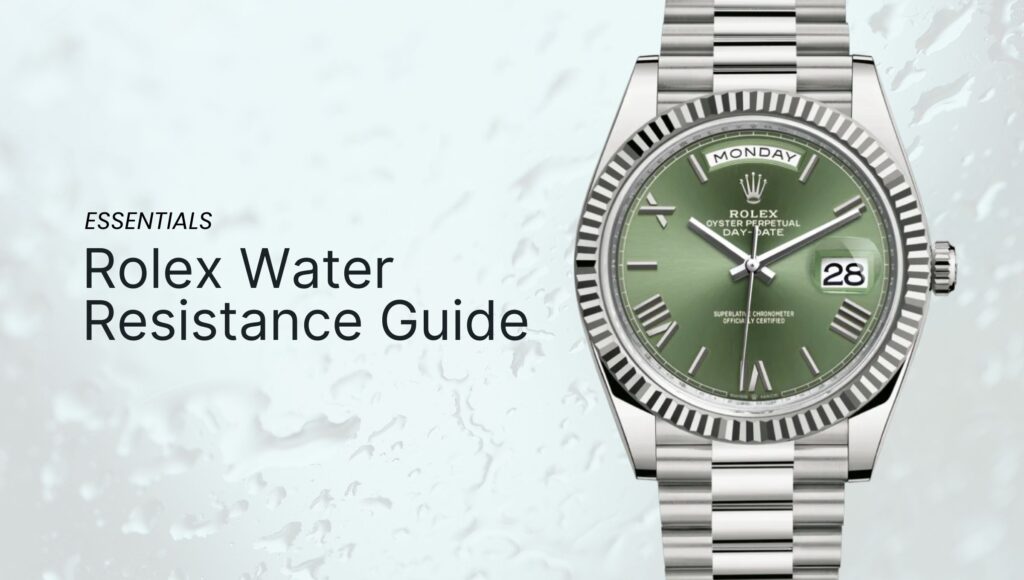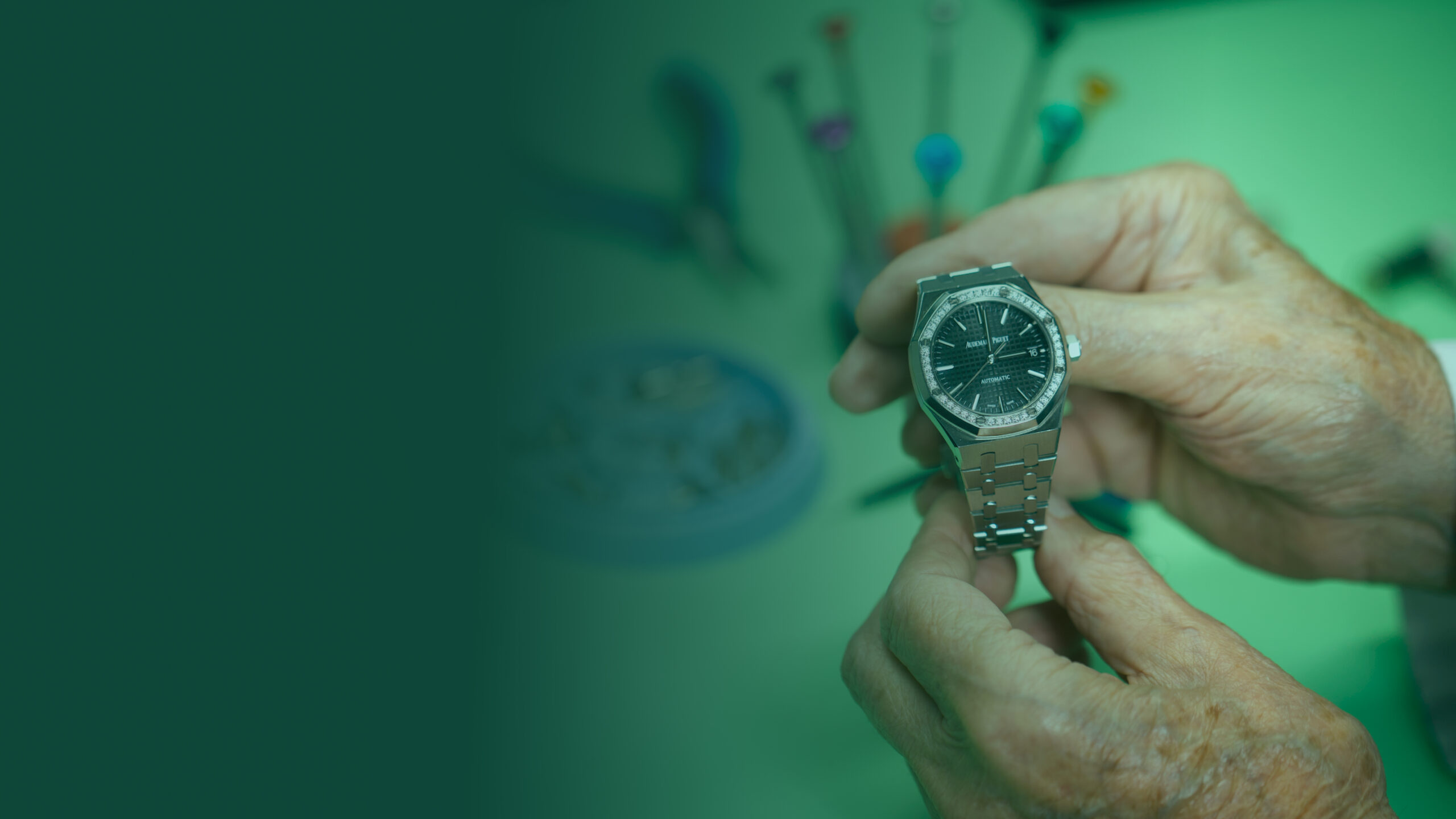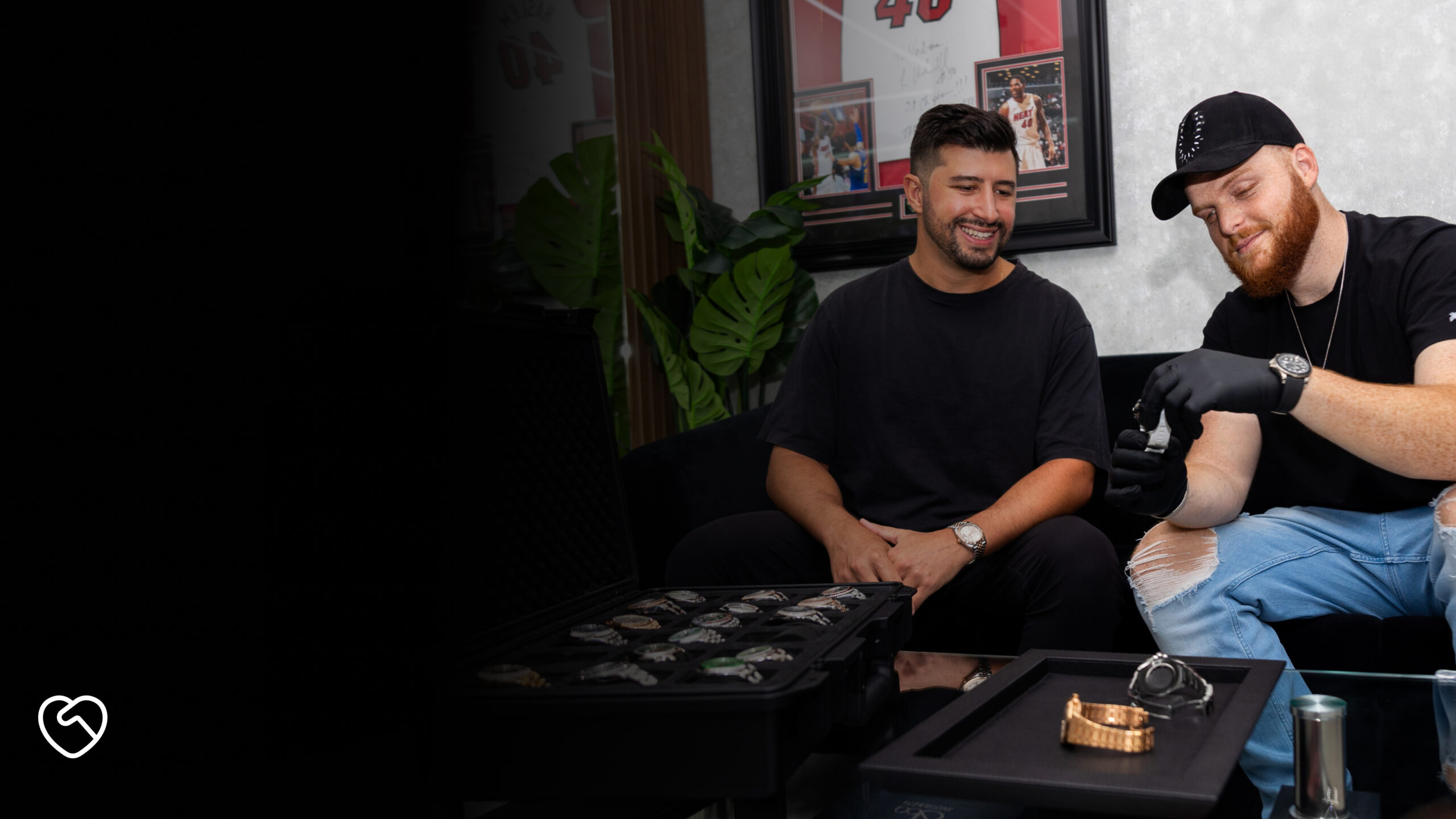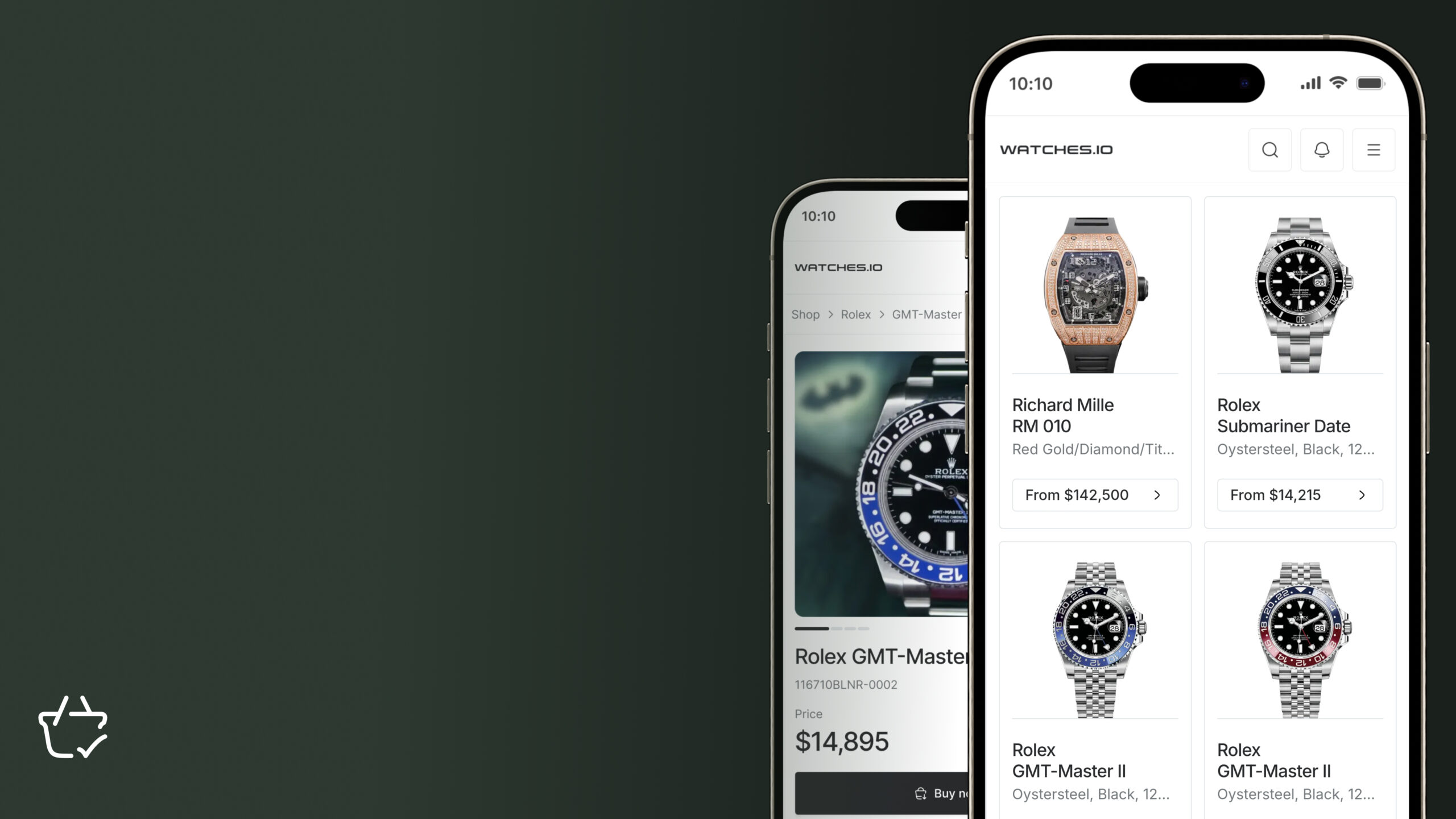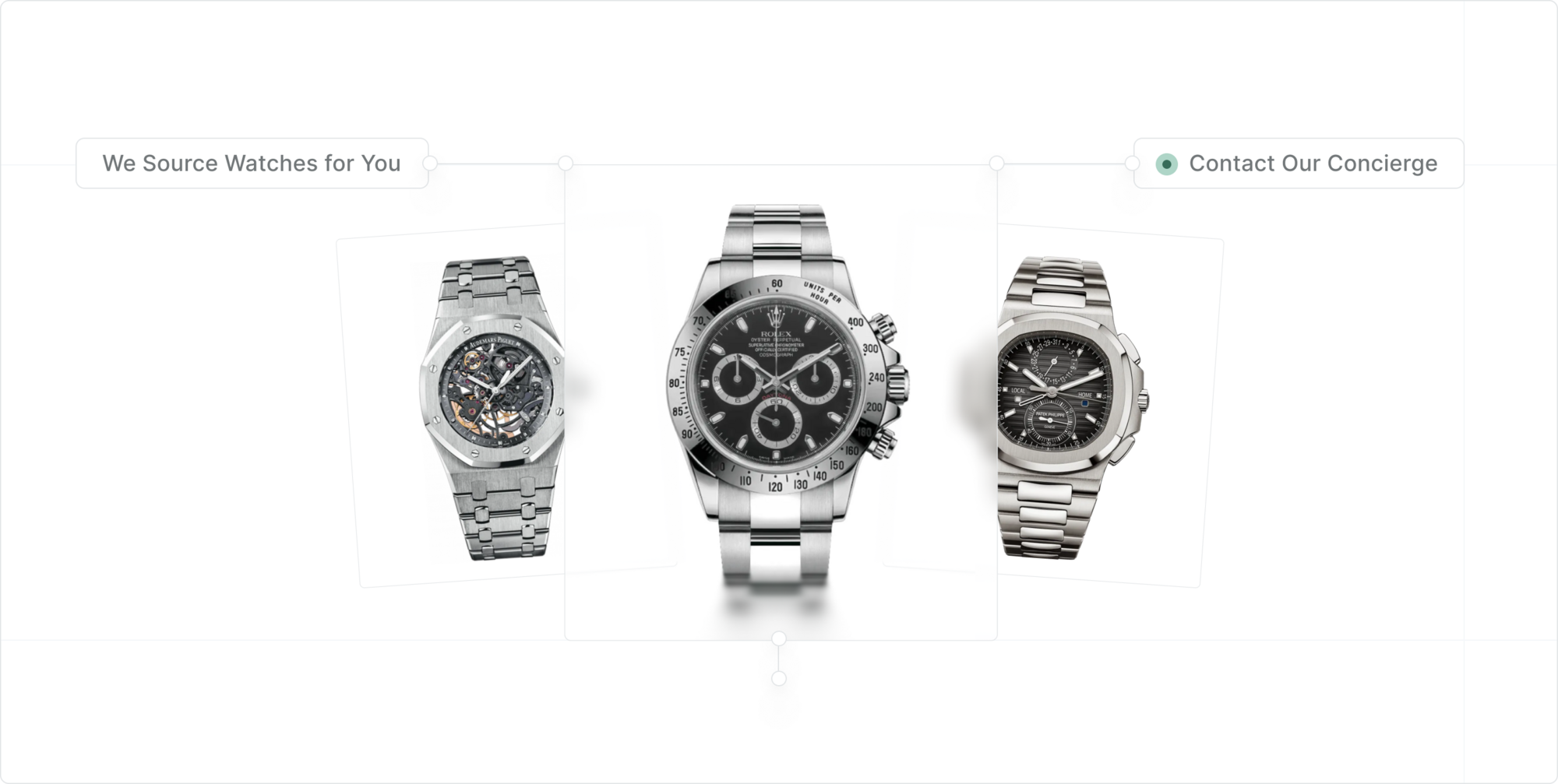From the peak of Mount Everest to the depths of the Mariana Trench, Rolex watches have been trusted by adventurers and professionals to withstand the harshest environments on Planet Earth. Rolex’s groundbreaking Oyster case is central to this legendary durability; when it was introduced in 1926, it set a new industry standard for water resistance. But what does this mean for everyday use? Are Rolex waterproof? Can you shower with a Rolex on without any worry? These questions often arise among watch enthusiasts and potential buyers alike, especially novice or inexperienced ones. However, all watch collectors must know that no watch is truly waterproof, because that term implies 100% complete protection against water ingress under all circumstances. We’ll explore the extent of Rolex’s water resistance, highlight the specific features and technologies that protect Rolex watches from water damage and provide practical tips for maintaining its integrity.
A Legacy of Innovation: The Oyster Case
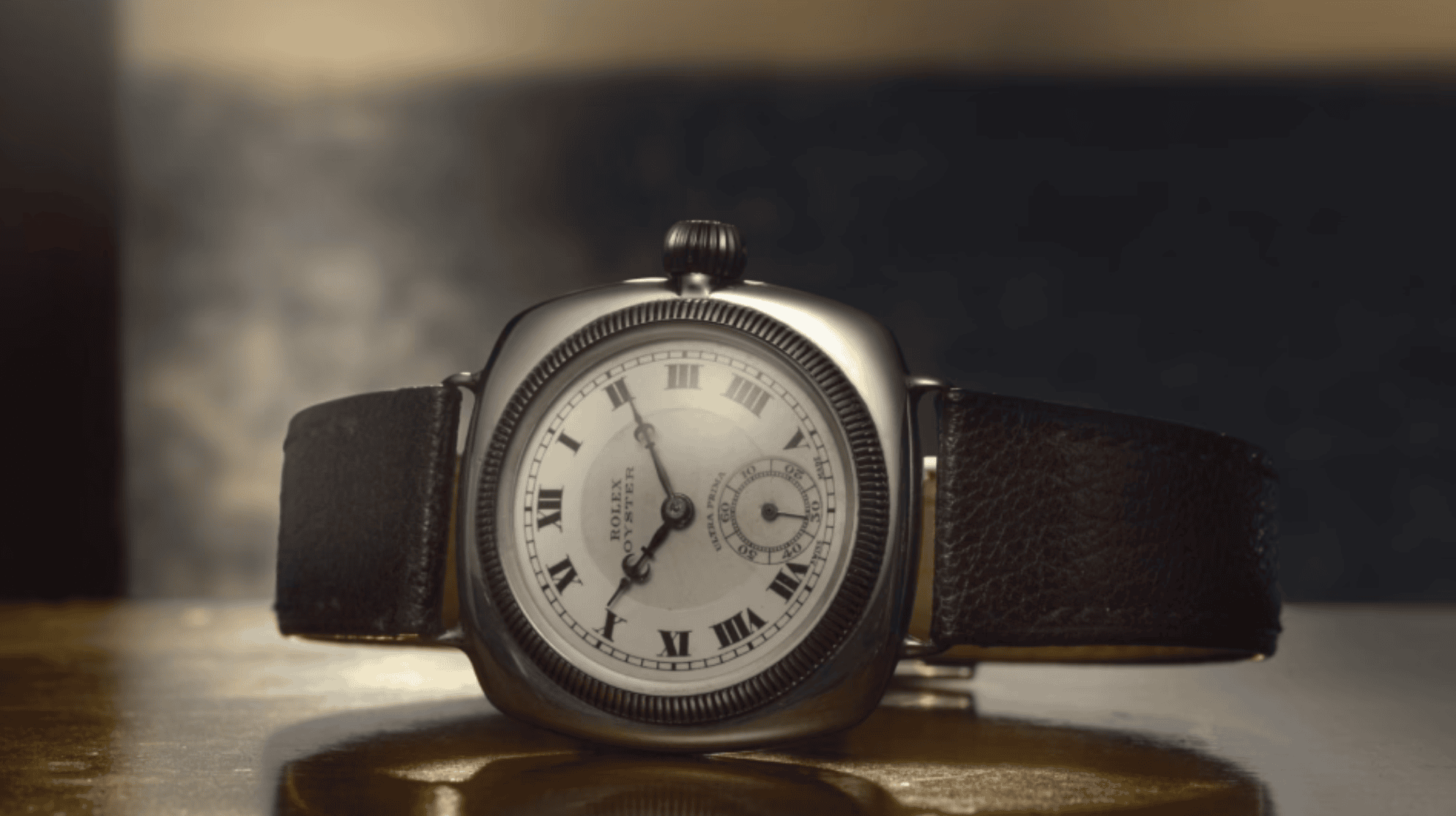
Rolex’s reputation for superior durability and water resistance began in 1926 with the introduction of the Oyster case, the world’s first waterproof watch case. This revolutionary design featured a hermetically sealed case that protected the movement from dust, moisture and pressure.
In 1927 a Rolex Oyster crossed the English Channel, worn by a young English swimmer named Mercedes Gleitze. The endurance swim lasted over 10 hours, and Gleitze’s watch remained in perfect working condition at the end of her triumphant ordeal.
To celebrate the crossing of the channel, Rolex published a full-page ad on the front page of the Daily Mail proclaiming the success of the waterproof watch. This event marked the birth of Rolex’s celebrated “Testimonee” concept.
What is Rolex’s Water Resistance Technology?
Rolex’s water resistance technology is defined by the airtight construction of its watches, achieved through meticulous craftsmanship from initial design all the way through to final assembly. (Source: Rolex) Since its groundbreaking creation of the Oyster case, Rolex has introduced numerous innovations, including the Twinlock and Triplock winding crowns, the helium escape valve and the Ringlock system, all of which enhance the waterproofness and resilience of their timepieces. These technical advancements are integral to the airtight culture governing Rolex’s production process.
Are All Rolex Watches Waterproof?
No. While many Rolex models boast extraordinary water resistance, it’s essential to understand that not all Rolex watches are created equal in this regard.
However, all Rolex Oyster Perpetual wristwatches are guaranteed to be waterproof to depths of at least 100 meters, with the exception of the first-generation Perpetual 1908 model being waterproof only to 50 meters. That being said, some Oyster models have been proven to withstand depths of 1,220 meters or even 3,900 meters.
To maintain your Rolex’s watch’s impeccable waterproofness, make sure that the winding crown is screwed down tightly to create a hermetic seal before exposing it to water. After resetting the time, date or other functions, or winding the watch manually, it is imperative to screw down the crown tightly until it cannot turn any further. Additionally, after wearing your watch in the sea, rinse it with fresh water to remove from all crevices and surfaces any salt and sand deposits.
Rolex distinguishes between “waterproof” and “water-resistant,” with the latter term being more accurate. Here’s a closer look at their key differences.
Explore Rolex’s water-resistant collections on Watches.io.
Rolex Waterproof vs. Water Resistant: Key Differences
The term “waterproof” suggests that a watch can never allow water to seep inside under any circumstances. This would imply an absolute imperviousness to water, regardless of conditions or duration of exposure.
In reality, however, no watch can achieve true waterproofness. Over time and under certain conditions, water can eventually penetrate any watch. Recognizing this, the FTC banned the use of “waterproof” as a descriptor for watches in the 1960s.
“Water resistant,” on the other hand, is a more accurate and standardized term. It indicates that a watch can withstand water exposure to a certain depth and for a specific period, under ideal conditions. This rating is provided through rigorous standardized testing and certification.
Every Rolex Oyster model is water resistant to at least 100 meters, meaning it is designed to withstand water exposure at that depth without allowing water to penetrate. For dive models, Rolex’s standards are even more stringent. The Submariner, Sea-Dweller and Deepsea are water resistant to depths of 300 meters, 1,220 meters and 3,900 meters, respectively. These watches are built with enhanced features like the Triplock winding crown and robust gaskets to ensure superior water resistance.
Similarly, Rolex’s approach to water resistance is rooted in its pioneering innovations and rigorous testing standards. The Oyster case provides a hermetically sealed environment, protecting the watch from dust, moisture and pressure.. While no Rolex watch is entirely waterproof, their impressive best-in-class water resistance ratings make them some of the most durable and reliable timepieces available on Earth, capable of withstanding extreme underwater conditions and everyday water exposure.
The 5 Most Common Rolex Water Resistance Rating
Most luxury watch manufacturers adhere to a set of industry-standard water resistance ratings, though certain models may feature unique specifications. Here are the five most common depth ratings you are likely to encounter:
1. 30 Meters (100 Feet, 3 Bar, 3 ATM)
The lowest depth rating found in watches, designed to withstand rain and standard hand-washing. Incidental contact with moisture is acceptable, but it is not advisable to take a watch with a 30-meter water resistance rating swimming, snorkeling or scuba-diving.
Usage:
- Suitable for: Rain, hand-washing
- Not suitable for: Swimming, high-impact water activities
2. 50 Meters (165 Feet, 5 Bar, 5 ATM)
This rating offers slightly more protection, allowing for light swimming but still not suitable for high-impact water sports or diving. Watches with a 50-meter rating can handle casual water exposure but should avoid vigorous activities.
Usage:
- Suitable for: Light swimming
- Not suitable for: High-impact water sports, Scuba diving
3. 100 Meters (330 Feet, 10 Bar, 10 ATM)
A solid level of water resistance suitable for most everyday situations, including swimming and snorkeling. While it can be used for Scuba diving if the gaskets are fresh, it is not ideal for activities involving dynamic pressure changes.
Usage:
- Suitable for: Swimming, snorkeling
- Not suitable for: High board diving, extensive Scuba diving
4. 200 Meters (660 Feet, 20 Bar, 20 ATM)
This depth rating is the minimum required for Scuba diving. It offers excellent protection against day-to-day moisture and can withstand high-impact water sports.
Usage:
- Suitable for: Scuba diving, high-impact water sports
- Not suitable for: Saturation diving
5. 300 Meters and Above (1,000 Feet, 30 Bar, 30 ATM)
Watches with a water resistance rating of 300 meters or more are designed for all water sports and prolonged diving activities. These watches are more than adequate for professional Scuba diving, with the exception of saturation diving.
Usage:
- Suitable for: All water sports, deep and prolonged diving
- Not suitable for: Saturation diving
Water Resistance Across Different Rolex Models
Rolex’s steadfast dedication to achieving water resistance functionality is a defining feature across its varied collection of timepieces. Each model is meticulously engineered to meet the specific demands of its intended environment, ensuring that every watch performs optimally whether in everyday settings or extreme conditions. The varying degrees of water resistance in different Rolex models cater to a wide range of activities, from daily wear to professional diving.
Here’s an in-depth look at the water resistance capabilities of various Rolex models:
Rolex Datejust Water Resistance
Is the Rolex Datejust Waterproof?
The Rolex Datejust is not technically “waterproof,” but it is highly water-resistant. The Datejust is designed to withstand water exposure up to 100 meters (330 feet), making it suitable for everyday activities, including swimming and light water sports.
Datejust Water Resistance Specifications
- Water Resistance Rating: 100 meters (330 feet)
- Features: Oyster case, Twinlock winding crown
Rolex Submariner Water Resistance
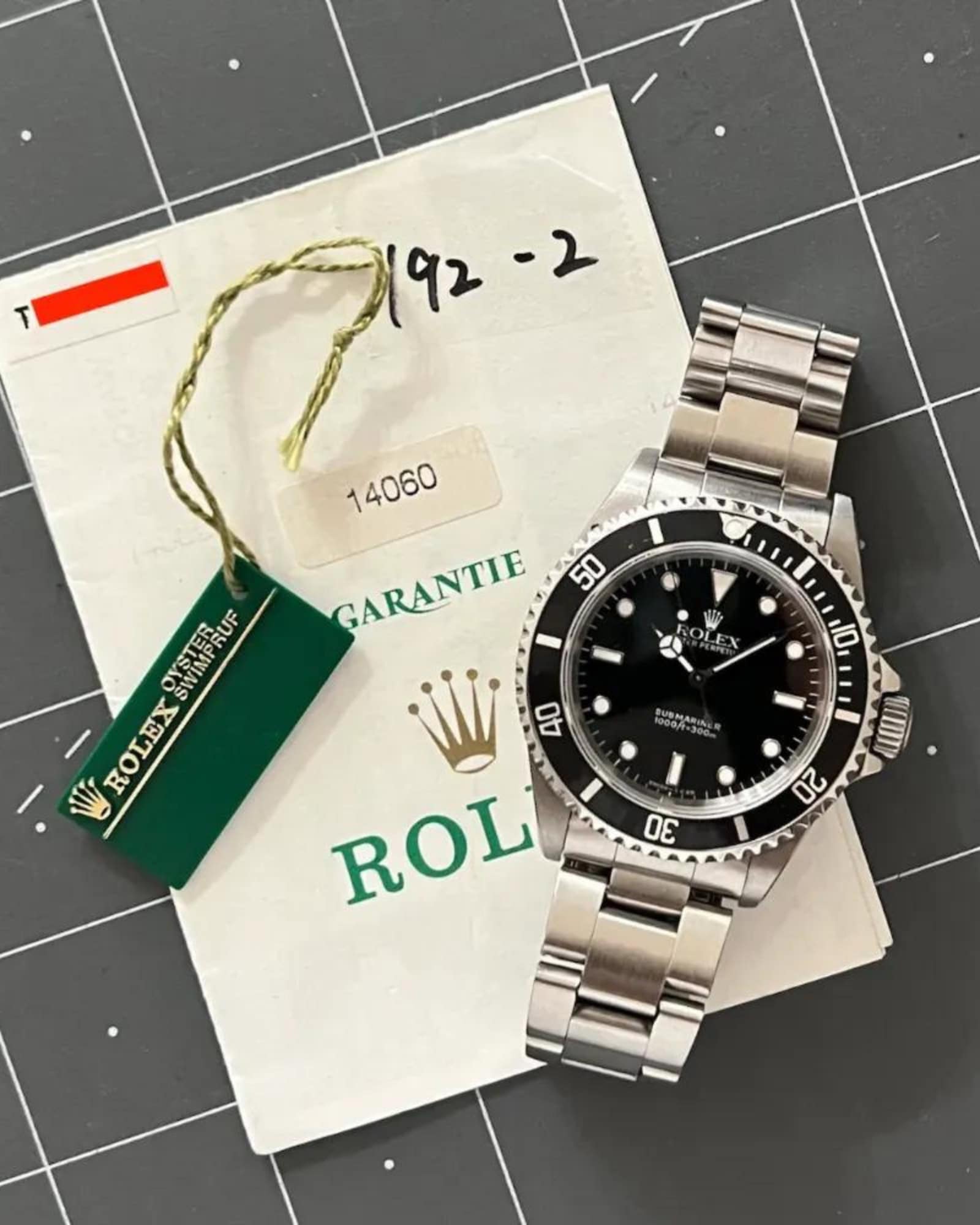
The Rolex Submariner is one of the most iconic dive watches, offering impressive water resistance up to 300 meters (1,000 feet). This makes it an ideal Rolex model for professional divers and underwater explorers.
Submariner Water Resistance Specifications
- Water Resistance Rating: 300 meters (1,000 feet)
- Features: Oyster case, Triplock winding crown, unidirectional rotating bezel
Rolex Oyster Perpetual Water Resistance
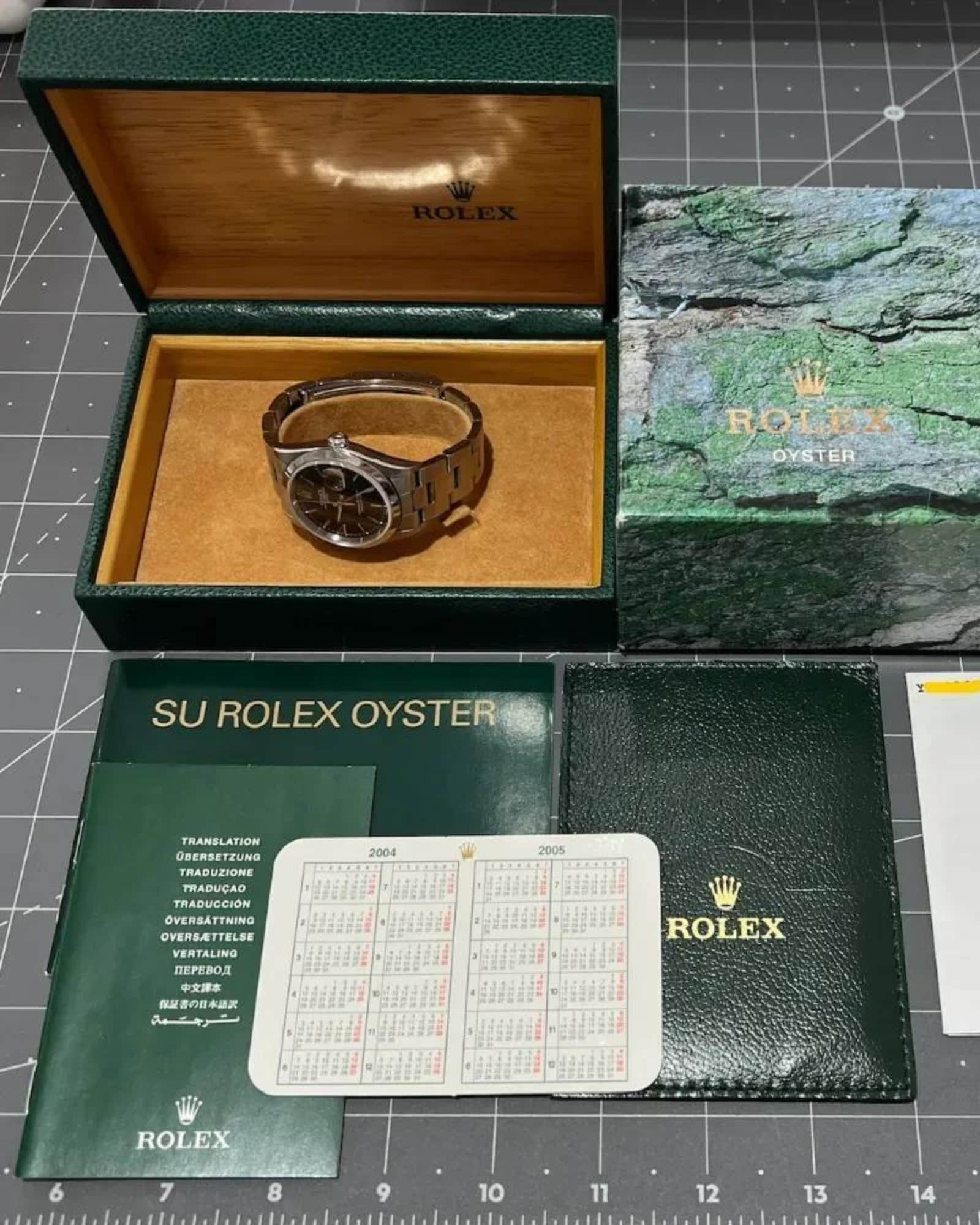
Is the Rolex Oyster Perpetual Waterproof?
Like many of its Rolex brethren, the Rolex Oyster Perpetual is not “waterproof” but is highly water-resistant. It can withstand water exposure up to 100 meters (330 feet), making it perfect for daily wear even in damp or humid conditions and recreational water activities.
Oyster Perpetual Water Resistance Specifications
- Water Resistance Rating: 100 meters (330 feet)
- Features: Oyster case, Twinlock winding crown
Rolex Daytona Water Resistance
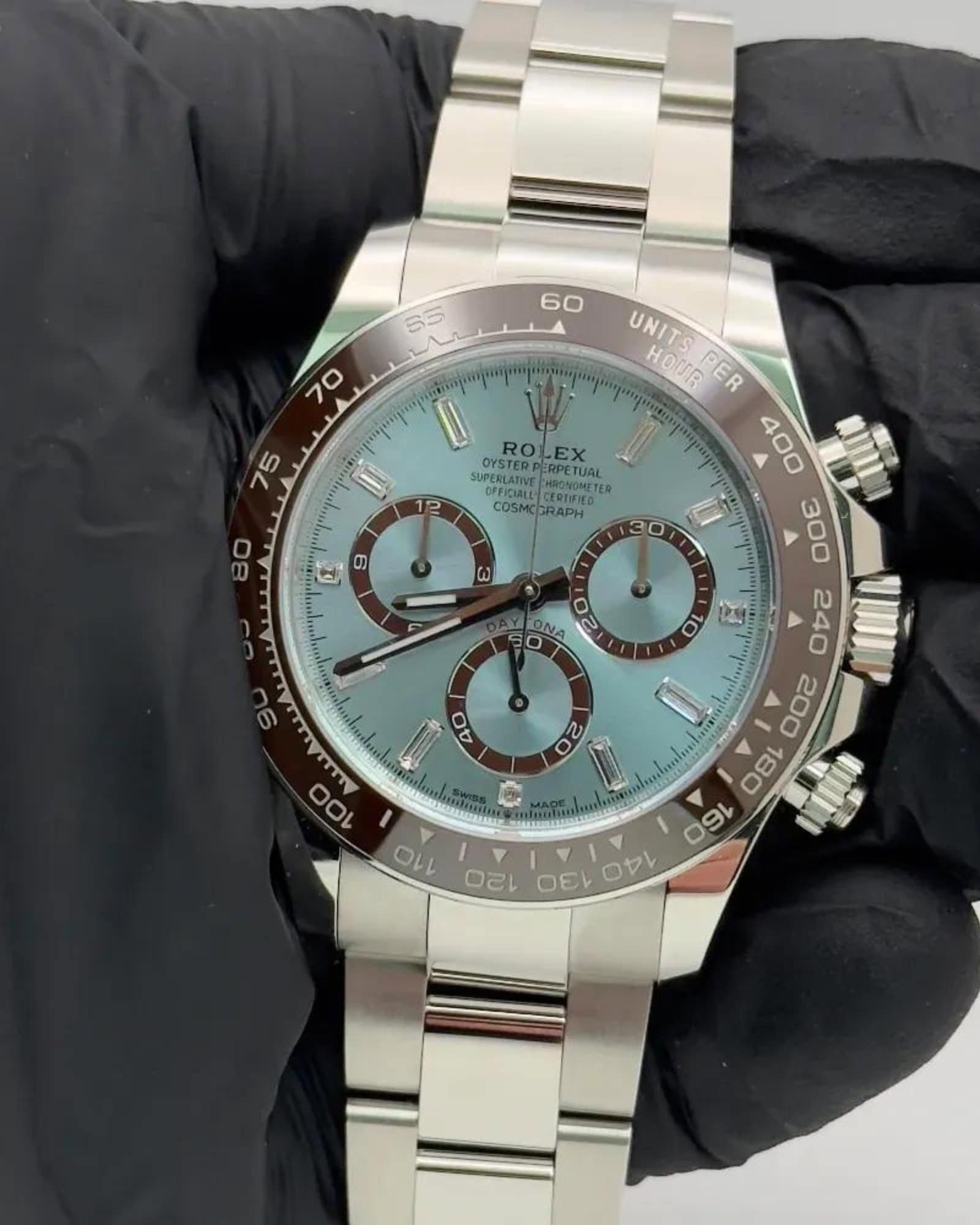
Daytona Water Resistance Specifications
The Rolex Daytona, known for its global association with professional and amateur auto racing, also boasts a solid water resistance rating of 100 meters (330 feet). This ensures it remains functional and protected from damage during various water exposures.
- Water Resistance Rating: 100 meters (330 feet)
- Features: Oyster case, Triplock winding crown
Rolex GMT Water Resistance
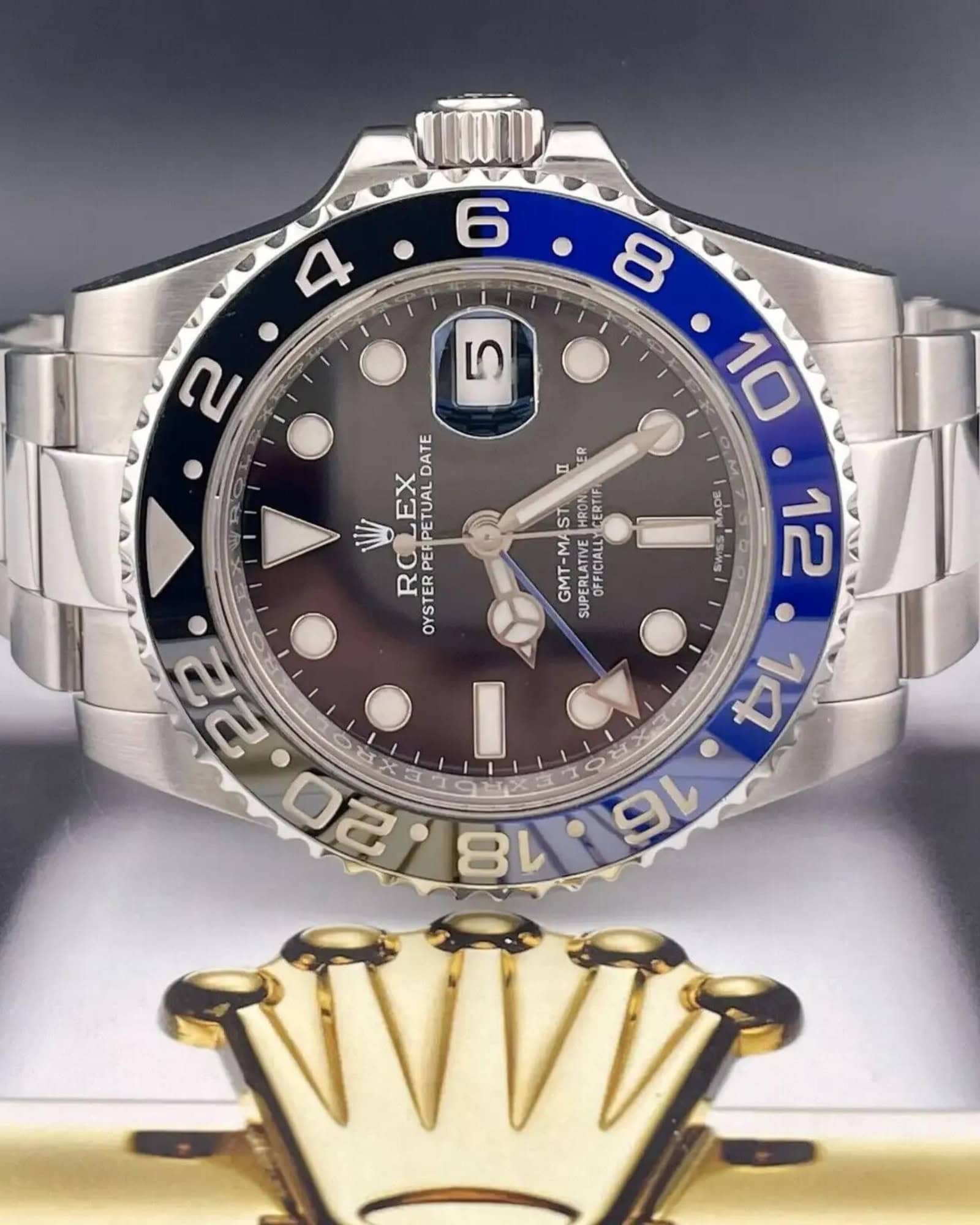
GMT-Master II Water Resistance Specifications
The Rolex GMT-Master II is designed for travelers and adventurers, offering water resistance up to 100 meters (330 feet). It is well-suited for swimming, snorkeling, water skiing, wakeboarding and other water-related activities, providing reliable performance in various medium-intensity conditions.
- Water Resistance Rating: 100 meters (330 feet)
- Features: Oyster case, Twinlock winding crown
Maintenance Tips for Preserving Water Resistance
Maintaining your Rolex properly is vital to preserving its water resistance.
Here are some essential tips:
- Regular Servicing: Have your Rolex serviced by an authorized Rolex service center every 5 to 10 years to ensure the gaskets and seals are intact.
- Proper Handling: Always ensure the winding crown is tightly screwed down before exposing the watch to water. Avoid pressing the pushers or adjusting the crown underwater.
- Cleaning: Rinse your watch with fresh water after exposure to saltwater or chlorine. Use a soft brush and mild soap to clean the case and bracelet, then dry with a soft cloth.
- Storage: Store your Rolex in a dry environment, preferably in a watch box or safe. Avoid areas with high humidity or extreme temperatures.
- Avoid DIY Repairs: Attempting to open the case or replace parts yourself can damage the watch and compromise its water resistance. Always seek professional help for repairs and maintenance.
FAQs about Rolex Water Resistance
Can Rolex watches get wet?
Yes, Rolex watches can get wet. All Rolex Oyster Perpetual models are designed to be water-resistant to at least 100 meters (330 feet). This means they can handle everyday water exposure such as rain, hand-washing and even swimming. Models like the Submariner, Sea-Dweller and Deepsea offer even greater water resistance, which make them suitable for professional diving or extended submarine activities.
What happens if a Rolex gets wet?
If a Rolex gets wet within its specified water resistance rating, nothing will happen—it will continue to function normally. However, if water seeps into the watch due to improper handling (such as an unscrewed crown) or if the water resistance seals are compromised (due to aging or damage), moisture can enter the case and potentially damage the movement. In such cases, it is essential to have the watch inspected and serviced by an authorized Rolex service center as soon as possible to prevent further damage.
Can I wear my Rolex in the shower?
While Rolex watches are water-resistant, it is generally not recommended to wear them in the shower. Hot water, soap and shampoo can degrade the gaskets over time, potentially compromising the watch’s water resistance. Additionally, sudden temperature changes can affect the seals. For these reasons, it is best to avoid wearing your Rolex in the shower to maintain its longevity and water resistance.
Is it OK to swim with Rolex?
Yes, it is OK to swim with a Rolex provided it has a water resistance rating of at least 100 meters (330 feet), which includes most Oyster Perpetual models. For activities such as swimming and snorkeling, models like the Datejust, Oyster Perpetual and GMT-Master II are suitable. For more intensive water activities like diving, models such as the Submariner (300 meters), Sea-Dweller (1,220 meters) and Deepsea (3,900 meters) are designed to handle greater depths and pressures.
Which Rolex is not waterproof?
Technically, no Rolex watch is “waterproof” as this term implies an absolute imperviousness to water under all conditions, which is not achievable. However, all modern Rolex watches are highly water-resistant. The Perpetual 1908 model for instance has a lower water resistance rating of 50 meters (165 feet) compared to other models. This makes it suitable for light water exposure, but not for swimming, diving or other high-intensity surface water sports like jet skiing or tubing. Always ensure the crown is properly screwed down to maintain the water resistance of your Rolex watch.

